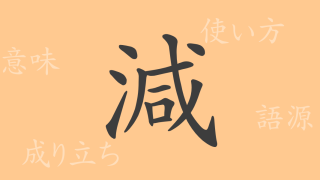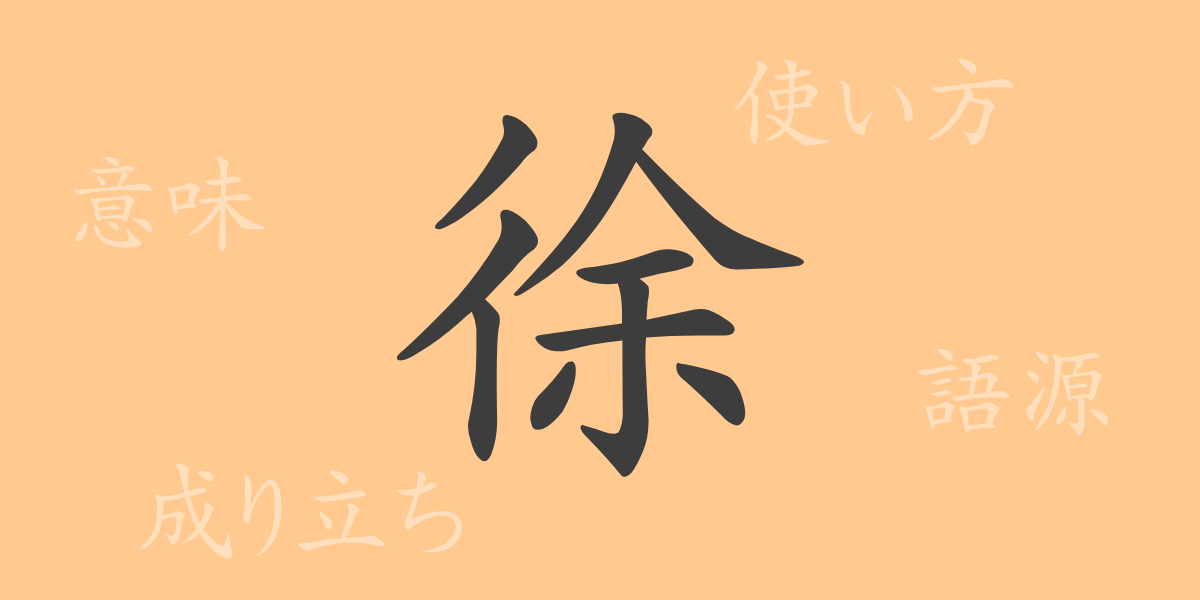The beauty of the Japanese language is reflected in its characters. ‘徐’ (じょ), one of the commonly used Kanji, embodies the depth of Japanese through both its form and meaning. This article explores the origins of the Kanji ‘徐’, its contemporary usage, and unravels its unique allure.
Origins of 徐 (じょ)
The Kanji ‘徐’ originated in ancient China and evolved from pictographic characters. It was originally formed by combining ‘彳’ (ちょ), representing a slowly walking foot, and ‘余’ (よ), indicating a beautiful shape. The character illustrates the act of walking carefully and slowly, coming to mean slow movements or attitudes over time.
Meaning and Usage of 徐 (じょ)
‘徐’ carries meanings such as ‘slowly’, ‘deliberately’, and ‘carefully’. It is primarily used as an adjectival verb or adverb to describe calm and unhurried actions. In Japanese, its elegance is particularly pronounced in literary works and poetic expressions.
Readings, Stroke Count, and Radical of 徐 (じょ)
The Kanji ‘徐’ showcases the richness of Japanese through its reading and structure:
- Readings: The on’yomi (Sino-Japanese reading) is ‘ジョ’, and the kun’yomi (native Japanese reading) is ‘おもむ.ろに’.
- Stroke Count: ‘徐’ consists of 10 strokes.
- Radical: The radical of ‘徐’ is ‘彳’ (ぎょうにんべん).
Phrases, Idioms, and Proverbs Using 徐 (じょ) and Their Meanings
Phrases, idioms, and proverbs including ‘徐’ reflect the depth of its meaning and cultural background. Here are some examples:
- 徐行 (じょこう): To proceed slowly. In traffic, it means to reduce speed for safety.
- 徐に (おもむろに): Slowly, without haste.
- 徐々に (じょじょに): Gradually, over time.
Conclusion on 徐 (じょ)
Each Kanji character, imbued with meaning and history, offers a fascinating aspect of learning Japanese. ‘徐’, with its leisurely ambiance and connotations of the flow of time, is still widely used in various contexts today. Through this article, we hope you have gained an appreciation of the unique charm of ‘徐’.

























